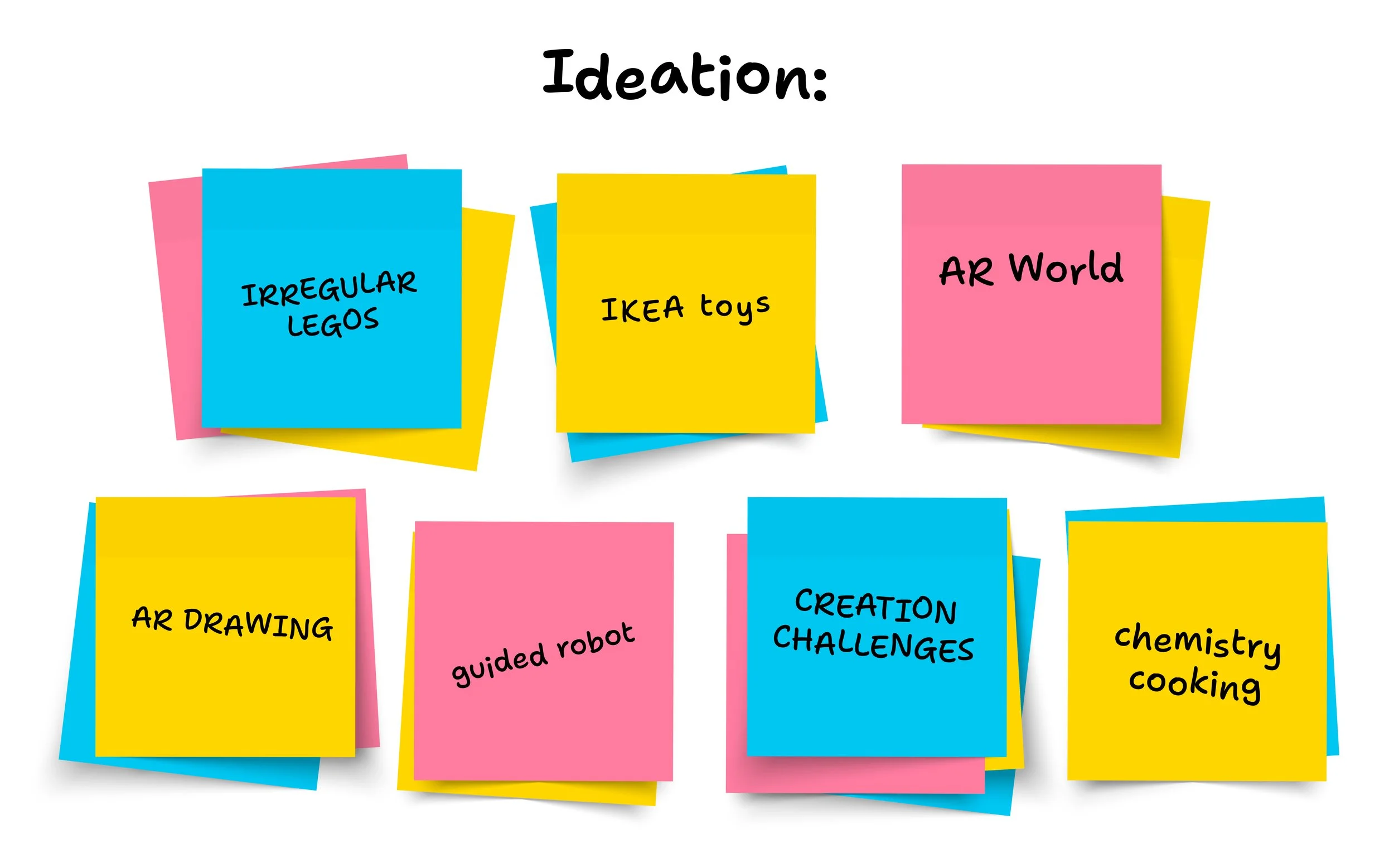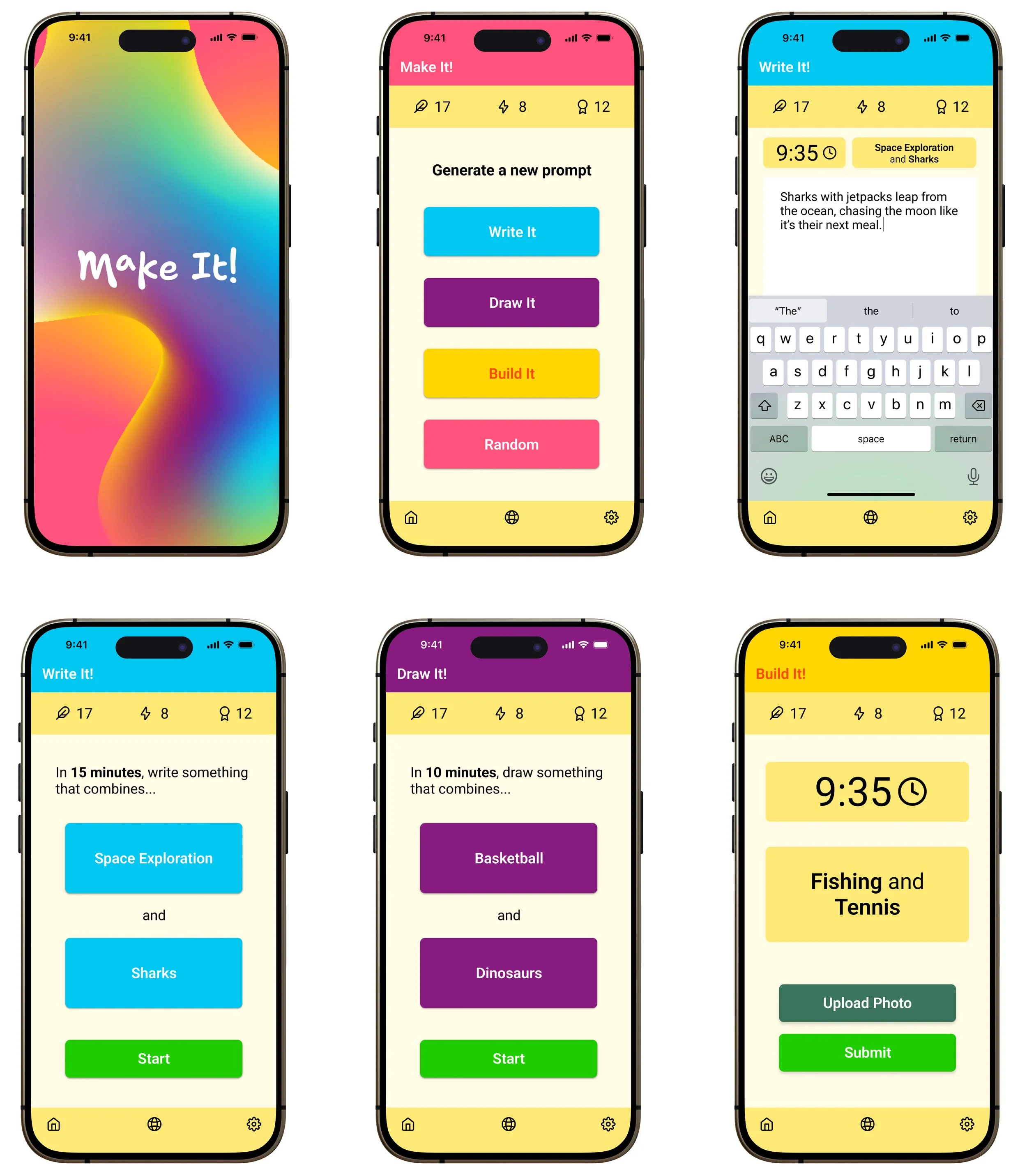Make It!
Kids ages 10-12 experience a difficult transition to adolescence due in part to decreasing opportunities for creativity.
Our Hypothesis:
Kids lose the desire to create as they transition from childhood to adolescence.
Parents want their kids to be creative, but don’t know how to encourage them.
Gender affects how a child expresses their creativity.
Assumptions to Test:
Secondary research and competitive analysis on existing solutions. Our findings included primarily digital and physical games, and toys.
Interviewed parents, educators, instructional designers, and kids ages 10-12. Surveyed 45 people who had regular interaction with children in that age range at home or work.
Our Research:
The transition to adolescence is different for every child.
Kids are always using technology, but it distracts/prevents them from utilizing their creativity.
Learning at that age should be entertaining, engaging, and efficient.
Our Insights:
Our team held ideation sessions together, and co-creation sessions with some potential users and stakeholders to branch off from for our prototype design.
Make It! was the result. The app generates prompts with different time limits for kids to fit creative moments into their day using just their phone or physical materials around their house. It was gamified by the inclusion of streaks, awards, and levels to motivate kids with a competitive nature.
After conducting user tests and product interviews, we received positive feedback overall from both parents and children. Small adjustments were taken into consideration for a future prototype.*
Our Product:
Make It! was adapted into a subscription service, card game, and online sharing platform. The platform prototype included tutorials and newsletters, as well as a space for kids to share their creations.
Our team conducted more user and pain point research and journey mapping as part of this development process.
Our Adaptations:**
*Make It! was a study done for a User Experience and Interface Research class at Brigham Young University in 2020. No additional prototypes were tested. The project focus was to implement skills associated with UX research and design thinking.
**Make It! adaptations were pitched to a panel of judges, but never tested with users.



